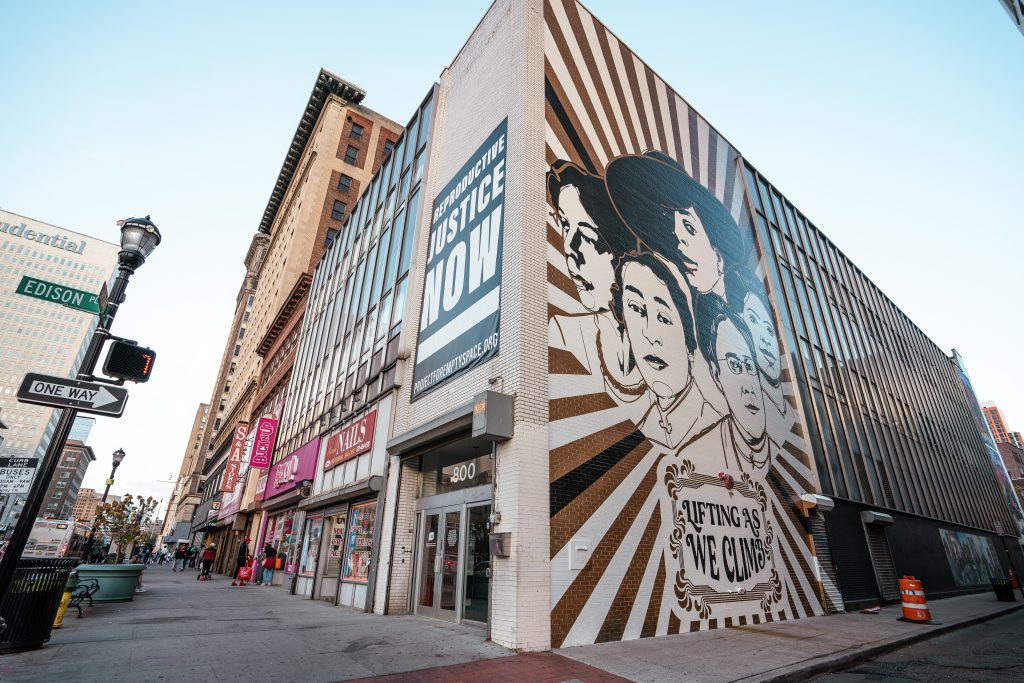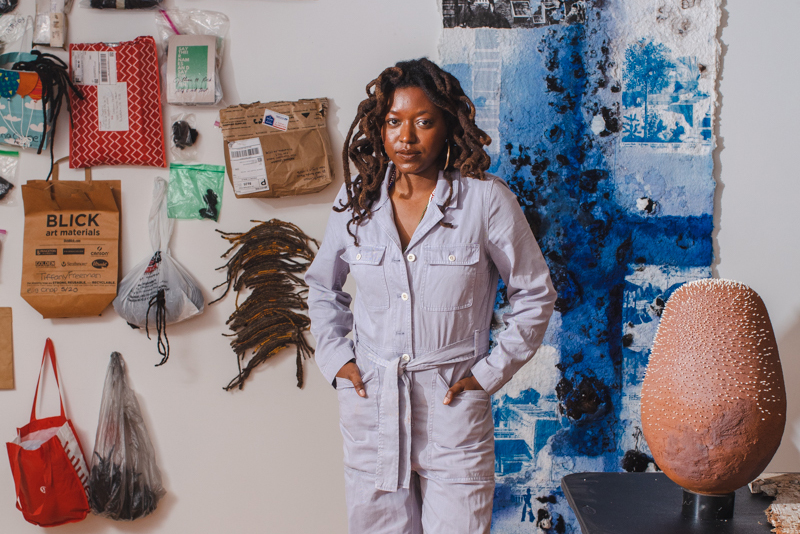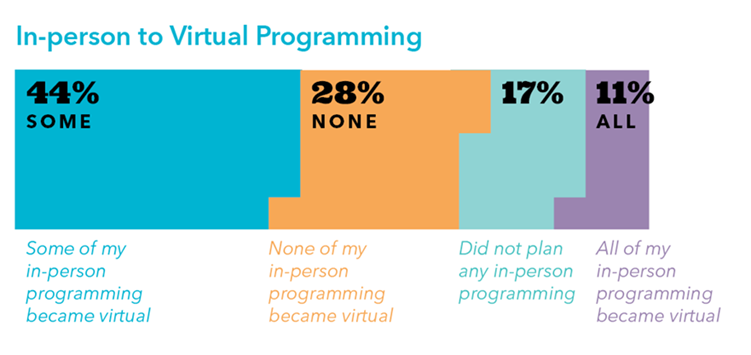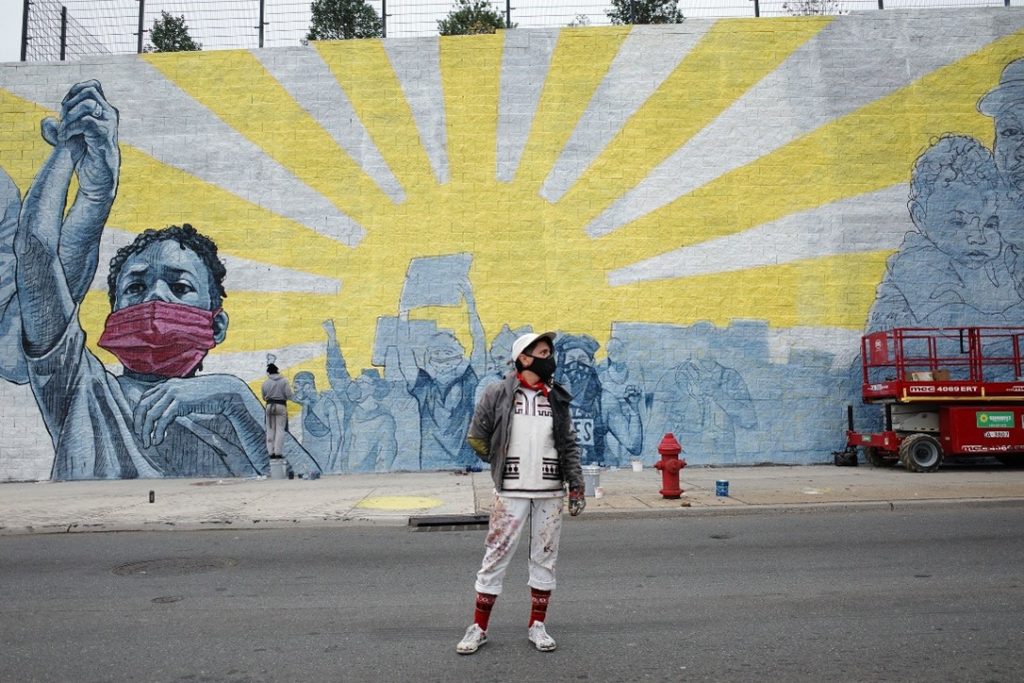
By David Andersson, Arts & Culture Team, Bloomberg Associates
The COVID-19 pandemic put the performing arts on pause across the world, and yet in Newark, New Jersey, there was music in the streets.
In summer 2020, the piano teachers at Keys 2 Success music school did not let restrictions on indoor congregating thwart their lessons. Instead of students coming to the school, the team rented a minivan and brought battery-powered keyboards to outdoor spaces in all five wards of the city, conducting sidewalk classes for kids from two years old through high school.
This innovation was made possible by a fast-acting civic investment in an arts community in crisis. The Creative Catalyst Fund, the City of Newark’s first-ever arts grant program, was launched by Mayor Ras J. Baraka in April 2020 to provide flexible funds to artists and cultural organizations in the early months of the pandemic. Keys 2 Success was one of 120 artists and organizations funded during the first year of the Creative Catalyst Fund, which has since issued over 400 grants totaling nearly $2.5 million.

To spin up the Creative Catalyst Fund quickly, Mayor Baraka turned to Bloomberg Associates, which had begun pro bono consulting work with the City of Newark the year prior. Bloomberg Associates’ Arts & Culture Team worked with the City’s newly appointed Arts and Cultural Affairs Director, fayemi shakur, to provide hands-on support with structuring the new grant program, designing an application portal, and building review and reporting processes. To help respond to the urgency of artist needs, the City allowed flexibility in the use of funds and developed an efficient process to disburse the grants as quickly as possible.
Each year since, the City of Newark and Bloomberg Associates have facilitated a rigorous yet efficient review process with a rotating selection committee comprised of community representatives, City staff, and arts experts, with funds distributed by local arts service provider Newark Arts.

The early months of the COVID-19 crisis took an enormous financial toll on the creative sector across the world. From 2019 to 2021, global cities saw a decrease in attendance by 94% to festivals, 61% to theater, and 48% to museums, as reported by the World Cities Culture Forum. In the U.S., the arts economy shrank at nearly twice the rate of the economy as a whole, as reported by the National Endowment for the Arts. Similarly, unemployment in the creative sector was double the national rate in the early months of the pandemic, with BIPOC and disabled individuals disproportionately affected, as studied by the national arts research group SMU DataArts.
The impacts were felt locally in Newark as well. In 2021, all but two of the Creative Catalyst Fund applicants had some amount of monetary loss due to pandemic-related closures, lost income, and canceled events, with an average estimated loss of $17,300 for artists and $108,300 for organizations. Over half of grantees were forced to shift some or all of their in-person programming to a virtual setting.

Mayor Baraka, a spoken word poet himself, is known as the Arts Mayor, and he acknowledges the significance of arts and culture to Newark. The creative sector contributes more than $178 million to Newark’s economy, supports roughly 5,000 local jobs, and generates $15.5 million in local and state taxes, as studied by Americans for the Arts prior to the pandemic. The City’s investment in this sector is a way to support the economy and to help home-grown artists build their practices for the benefit of Newark. And it is also a means for deep community reach across Newarkers of all walks of life. In a single year, Creative Catalyst Fund-supported programs served over 250,000 Newark residents and visitors in all neighborhoods of the city, and paid over 1,000 additional artists for their work on these projects.
Through this ongoing investment, the City of Newark acknowledges its artists and cultural institutions as a critical component of the city’s vitality. Though the Creative Catalyst Fund was initially launched as a three-year program, a fourth year of funding was recently passed in the City’s budget, with the hopes of continuing it as an annual program.

For Keys 2 Success, the success story carries on. Piano Bus continues to bring music instruction to nontraditional locations, both outdoors and indoors – at community centers, houses of worship, gyms, gardens – allowing young Newarkers to develop their musical talents right in their own neighborhoods. The innovation made possible by the City’s support is shaping the next generation of local artists, helping to ensure that Newark proudly remains a City of the Arts.